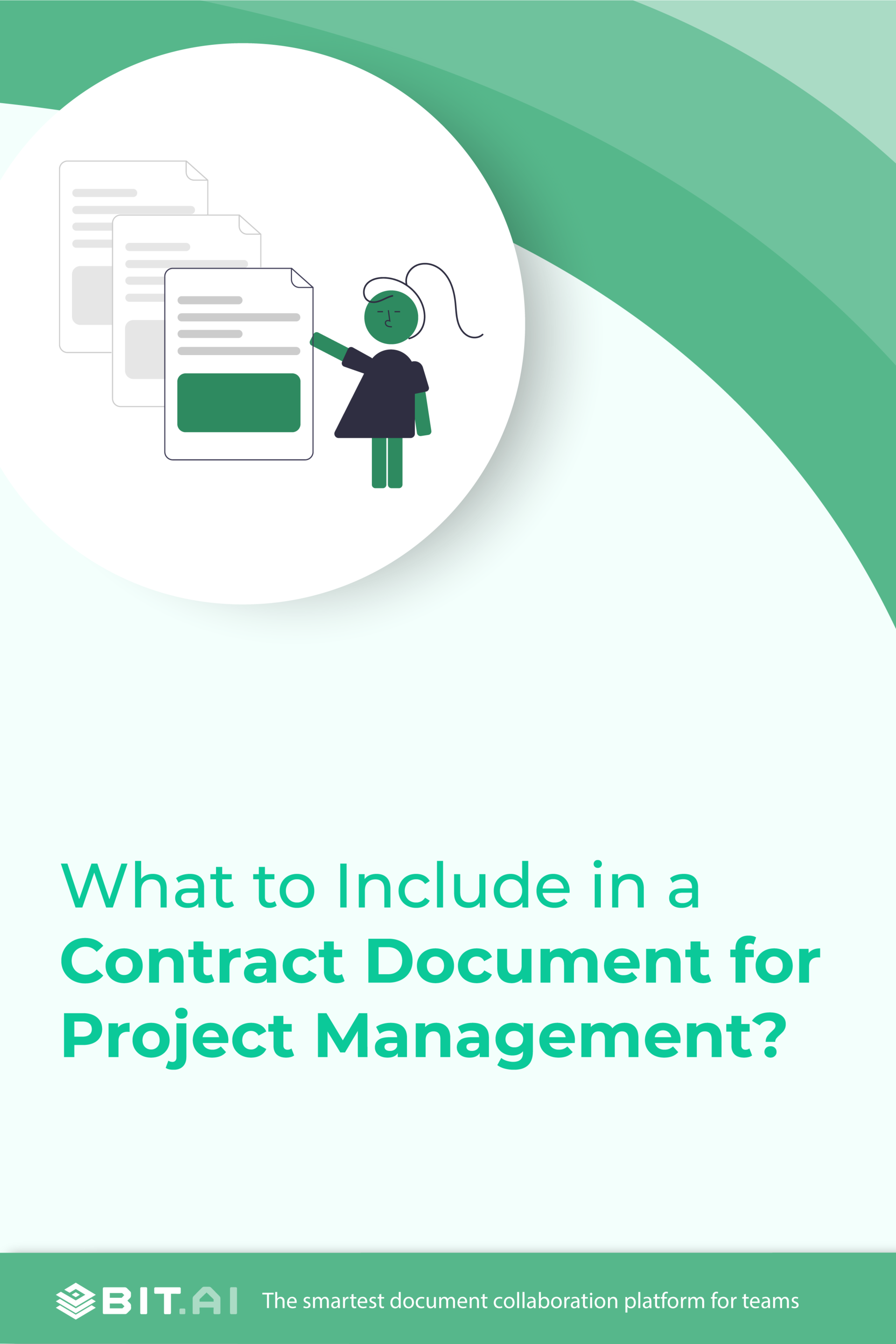Yes, we know – contract documents are not exactly the most glamorous aspect of a project, but they’re like the glue that holds everything together. Like a superhero’s trusty sidekick, these documents provide the necessary support to ensure the project’s success.
Whether it’s a construction project, a software development contract, or a consulting agreement, a well-drafted contract document can prevent disputes, ensure timely completion, and protect the interests of all parties.
A contract document outlines the rules of engagement, clarifies everyone’s roles and responsibilities, and helps ensure everyone is on the same page. Think of them as the blueprint for your project’s success!
This blog will dive into contract documents and learn everything about them. So, let’s get started!
First Off, What are Contract Documents?
Contract documents are written materials or documents that outline the terms and conditions agreed upon between two or more parties involved in a business transaction. These documents serve as a legal framework for a project’s execution and help define each party’s rights, responsibilities, and obligations.
Typically, a contract document includes a range of materials, such as drawings, specifications, schedules, and agreements, that help define the scope of work, timelines, deliverables, clauses, and payment terms of a project. They can be used for various business transactions, including construction projects, software development contracts, consulting agreements, project management, etc.
A comprehensive and well-drafted contract document can help prevent disputes, ensure timely completion, and protect the interests of all parties involved. If you’re wondering why this document is so important, let’s look at some of its benefits.
Benefits of Using a Contract Document
1. Clarifies Expectations
A contract document serves as a tool to clearly define the expectations and responsibilities of each party involved in the agreement. This is especially important when dealing with complex transactions or agreements, as it helps to ensure that all parties are on the same page. By clearly defining the terms of the agreement, a contract document helps to prevent misunderstandings and disputes that may arise due to a lack of clarity.
2. Provides Legal Protection
In case of a breach of contract, a contract document can be used as evidence in court to seek compensation or other remedies. The terms and conditions outlined in the contract document serve as the basis for the legal agreement. This makes it easier to prove the existence of the agreement and each party’s obligations, thereby ensuring that all parties involved in the contract are provided legal protection.
3. Improves Communication
Drafting a contract document requires all parties to communicate and negotiate their terms. This essentially means that there is improved communication and understanding between them. This can lead to a more positive and productive relationship between the parties involved. Additionally, if any issues or concerns arise during the drafting process, you can address and resolve them before the contract is finalized.
4. Establishes Trust
Signing a contract document demonstrates a commitment to its terms and conditions. This commitment helps establish trust between the parties involved, leading to a stronger and more successful business relationship. When parties trust each other, they are more likely to work together in good faith to achieve their goals, and they are less likely to engage in behaviors that could harm the other party.
Now that you know the benefits of using a contract document, let’s discover the elements to include!
What Should be Included in Contract Documents?
1. Parties
Contract documents cannot exist if there are no parties involved. Identifying the parties involved in the contract is crucial to avoid confusion and potential disputes. The names and addresses of each party should be mentioned clearly, along with any other relevant information, such as their legal status or capacity.
2. Scope of Work
The scope of work outlines the specific tasks and responsibilities to be performed or the goods or services to be provided under the contract. It defines the project’s boundaries and outlines what each party expects. It should be detailed and specific to avoid any misunderstandings or disagreements later on. The scope of work should include any relevant technical specifications, deadlines, milestones, and deliverables. This ensures everyone is on the same page and working towards the same goals.
3. Project Schedule

A project schedule is a critical tool for managing the project and must be included in the contract document. It outlines the timeline for a project and includes start and end dates for each phase. Project schedules can be used to track progress, identify potential delays, and ensure that the project is completed on time.
4. Budget
The budget document details the costs associated with the project. It includes labor, materials, equipment, and any other expenses. A budget is essential for managing project costs and ensuring that the project is completed within budget. It is used to track spending and adjust as needed to stay on track.
5. Payment Terms

In a contract document, the payment terms outline the payment schedule for the project. It should specify the amount, timing, and method of payment. This includes any upfront payments, installment payments, or final payments. Payment terms should also include applicable taxes, fees, or penalties for late payments.
6. Deliverables
Deliverables are the outputs or results expected from the work or services the contract or project provides. The contract document should clearly define and describe them by including any quality standards or acceptance criteria.
7. Indemnification
Indemnification clauses outline the responsibility of each party in the event of a legal claim or liability. These clauses should specify which party is responsible for any damages, losses, or costs incurred due to the contract document.
8. Confidentiality
Confidentiality clauses are necessary to protect sensitive information exchanged between the parties. These clauses should clearly define what information is confidential and how it should be handled and protected.
9. Termination
Termination clauses should specify the circumstances under which either party can terminate the project or contract and any associated penalties or fees. This includes termination for breach of contract or failure to meet deadlines or deliverables.
Read More: Contract Termination Letter: What is it & How to Write it?
10. Signatures
Lastly, a contract document must have signatures. They indicate the acceptance of the terms and conditions of the contract. Both parties should sign the contract to show their agreement and commitment to the terms outlined in the document.
Now that you know the various elements to be included in a contract document, let’s try to learn the commonly used contract documents in project management.
What are the Commonly Used Contract Documents in Project Management?
In project management, several contract documents are commonly used to establish agreements and expectations between the parties involved in a project. These documents may vary depending on the type of project and the specific needs of the parties involved, but here are some of the most commonly used contract documents:
1. Request for Proposal (RFP)
A Request for Proposal, or RPF, is a contract document issued by the project owner or client to solicit proposals from potential contractors or vendors to provide goods and services for the project.
2. Contract Agreement

The contract agreement is a primary document that outlines the terms and conditions of the project. It is a formal agreement between the project owner and the contractor. This document establishes the relationship between the parties involved and sets the foundation for the project. It defines the scope of work, timeline, deliverables, and payment terms for the project.
3. Statement of Work (SOW)
A statement of work or SOW is a document that describes the specific tasks and deliverables that the contractor is expected to provide as part of the project. It explains how a project must be conducted, its risks, milestones, deliverables, and more. These detailed descriptions help the parties involved understand the project deliverables, timetables, and expectations.
4. Special Conditions
Special Conditions are sometimes referred to as particular conditions in a contract. This document outlines the specific requirements and instructions for a particular job or project, which are in addition to or modify the general requirements. It may include unique circumstances and particular demands for specific aspects of the job or the entire project.
5. Change Order
Change of Order is a contract document used in project management to request project scope, timeline, or budget changes. It is typically used when unforeseen circumstances arise during the course of the project.
6. Bill of Materials
A bill of materials, also known as a bill of quantity, is a contract document that details the materials, parts, and labor needed for a project. It simplifies the bidding process and helps bidders estimate costs accurately. A quantity surveyor or building estimator typically prepares it.
7. Non-Disclosure Agreement (NDA)
NDA or Non=Disclosure Agreement is a legal agreement that establishes confidentiality between the parties involved in the project. It is used to protect sensitive information and trade secrets.
8. Memorandum of Understanding (MOU)
A Memorandum of Understanding or MOU is a document used to establish a mutual understanding between the parties involved in the project. It is often used when the parties are still negotiating and have not finalized the contract agreement.
These are just a few commonly used contract documents in project management. Other documents may be used depending on the specific needs of the project and the parties involved.
Wrap Up
In conclusion, contract documents are essential to every project, and their importance cannot be overstated. They provide a roadmap for successful project management by outlining the rights and responsibilities of all parties involved.
Whether you are a contractor, client, or supplier, a well-crafted contract document prevents potential issues and can save a project from major setbacks.
So, investing time and effort in creating detailed and comprehensive contract documents is always wise to ensure a smooth and successful project outcome. Hope this blog helped! Thank you for reading!
Further Reads:
Contract Management Software: A Guide To Taking Control of Contracts!
Contract Management: Best Practices for Maximizing Profitability!
Marketing Project Management: Definition, Process, Tips & More!
11 Agile Project Management Tools You Should Use in 2023
Waterfall Project Management: Definition and Other Details!
Project Management Communication Plan: Definition & Steps to Create
Project Management Guide with Free Template!

Related posts
Bit.ai | Watch to Learn More
What is Bit.ai?
Bit.ai is an innovative AI-driven knowledge and Document Managment suite designed to empower knowledge workers by streamlining the creation of, documents, wikis, and notes. With an intuitive interface and seamless integration, Bit.ai acts as a versatile assistant to help you collaborate, generate, organize, and visualize your ideas effortlessly. Whether you are drafting a report, managing a project, collaborating with your team or clients, or brainstorming new concepts, Bit.ai brings intelligence and creativity to every aspect of your work process.


